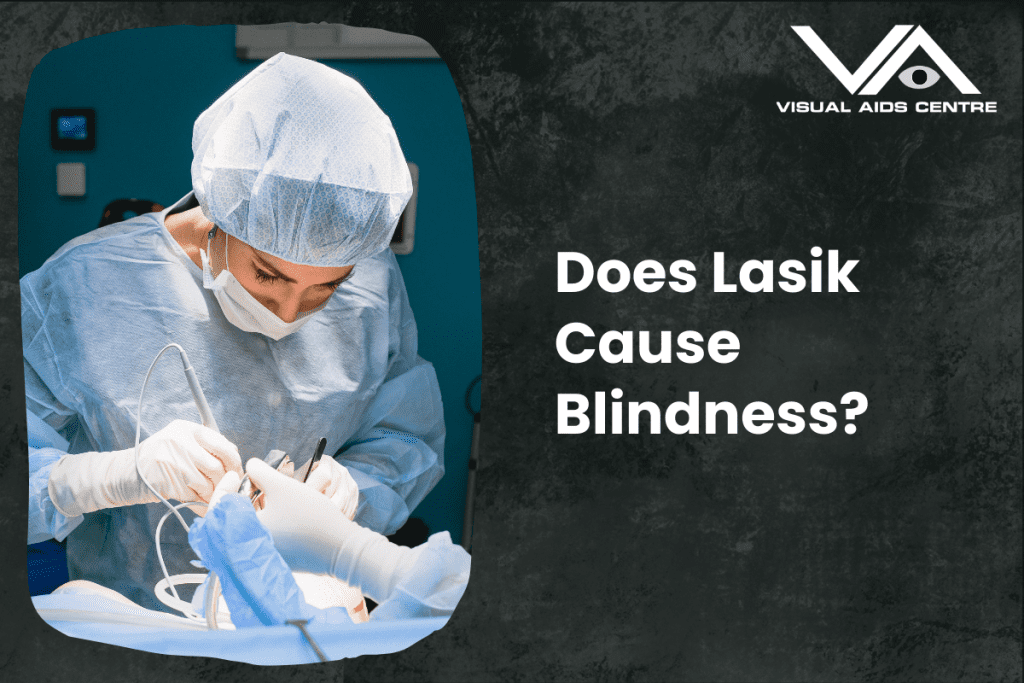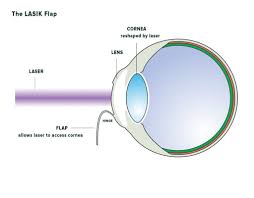Table of Contents
ToggleLASIK does not typically cause blindness.
While no surgical procedure is entirely without risk, severe complications resulting in permanent vision loss are extraordinarily rare following LASIK. Here’s everything you need to know about the safety of LASIK, the associated risks, and how to minimise them.

Understanding LASIK and Its Safety
Laser-Assisted in Situ Keratomileusis, commonly known as LASIK, is one of the most popular elective surgeries worldwide. It is used to correct refractive errors such as nearsightedness (myopia), farsightedness (hyperopia), and astigmatism, enabling most patients to reduce or even eliminate their dependence on glasses or contact lenses.
Is LASIK Considered Safe?
Yes, LASIK is widely regarded as a safe and effective vision correction procedure. According to studies published by the American Academy of Ophthalmology (AAO), LASIK has a high success rate, with 96% of patients achieving their desired vision outcomes. Furthermore, advancements in technology and surgical techniques over the past two decades have continually improved safety profiles and outcomes.
That said, no surgical procedure is entirely risk-free. Understanding the potential complications and ways to mitigate them is crucial for anyone considering LASIK.
Can LASIK Lead to Blindness?
The Risk of Blindness from LASIK is Extremely Low
The prospect of blindness from LASIK surgery is incredibly rare, with less than 1 in 5 million patients experiencing severe complications leading to this outcome. Most reported cases of vision loss post-LASIK are linked to factors that are manageable or preventable, such as poor aftercare or rare adverse reactions.
Ophthalmologists perform thorough pre-operative evaluations to ensure that only suitable candidates undergo LASIK. This reduces the likelihood of complications that could jeopardise vision.
What Are the Common Risks?
While blindness is exceedingly rare, LASIK does come with potential risks. These include:
- Dry eyes: A temporary or, in rare cases, a long-term condition where tear production is reduced.
- Glare and halos: Some patients may see light distortions, particularly at night.
- Undercorrection or overcorrection: These occur when the refractive error is not fully resolved, which may require enhancement surgery.
- Flap issues: The LASIK procedure involves creating a corneal flap, which, though rare, can lead to complications such as infection or improper healing.
- Eye infection or inflammation: This can happen if post-operative care instructions are not followed properly.
While these risks exist, they are manageable, and the advanced diagnostic and treatment protocols in modern LASIK practices significantly reduce the chances of permanent complications.
Factors That Can Increase the Risk of Complications
Certain conditions or behaviours can increase the likelihood of complications, including:
- Pre-existing health issues: Conditions such as autoimmune disorders, severe dry eye syndrome, or thin corneas can make LASIK less safe.
- Age: LASIK is typically not recommended for patients under 18, as their vision may still be changing.
- Pregnancy or breastfeeding: Hormonal fluctuations can temporarily alter vision, making LASIK results less predictable.
- Not following aftercare instructions: Non-compliance with prescribed drops or activities to avoid can elevate risks.
How Does LASIK Work?
To better understand the safety of LASIK, it helps to break down how the procedure is performed.
- Creating the corneal flap: A thin flap is created on the cornea using a microkeratome (blade) or femtosecond laser.
- Reshaping the cornea: An excimer laser is used to reshape the cornea to correct refractive errors.
- Repositioning the flap: The corneal flap is gently placed back into its original position, acting as a natural bandage.
Given its precision and short duration (typically under 30 minutes for both eyes), LASIK offers quick vision improvements, with most patients noticing better sight within 24 hours.
Why Is LASIK Safer Today Than Ever?
Advances in Technology
Modern LASIK procedures use cutting-edge technology to enhance safety and outcomes. For instance:
- Wavefront-guided LASIK: This customises the treatment to your unique eye anatomy, reducing the risk of light distortions like glare and halos.
- Femtosecond lasers: These allow for more precise and complication-free creation of the corneal flap.
Surgeon Experience
Choosing a highly experienced surgeon significantly minimises risks. Look for a surgeon with a proven track record, advanced certifications, and positive patient reviews.
Thorough Pre-Operative Screening
Patients undergo a range of diagnostic tests to ensure LASIK is right for them. This includes corneal thickness measurements, tear function tests, and assessments of overall eye health.
Post-LASIK Care to Prevent Complications
Follow Your Doctor’s Instructions
Adhering to post-operative guidelines is crucial for ensuring a smooth recovery and minimising complications. These may include:
- Using prescribed antibiotic and anti-inflammatory eye drops.
- Avoiding eye rubbing to prevent flap dislocation.
- Skipping activities like swimming and strenuous exercise for a few weeks.
Keep Up With Follow-Up Appointments
Post-surgery check-ups allow your surgeon to monitor your healing progress and address any emerging issues early.
Long-Term Care for Your Eyes
Even after LASIK, maintaining eye health is essential. Protect your eyes from UV light, keep them hydrated, and have regular comprehensive eye exams.
Who Should Avoid LASIK?
LASIK is not suitable for everyone, and ignoring candidacy requirements can elevate risks. Individuals who may not be ideal candidates include:
- Those with severe refractive errors that are beyond the correction range of LASIK.
- Patients with unstable vision in the past year.
- Those with eye diseases like keratoconus or glaucoma.
- Pregnant or nursing women, as hormonal changes can temporarily affect eyesight.
If LASIK isn’t suitable for you, your eye doctor may recommend alternative treatments like Photorefractive Keratectomy (PRK) or implantable contact lenses (ICL).
Alternative Vision Correction Options
For some patients, LASIK may not be the best option. Alternatives like PRK, SMILE (Small Incision Lenticule Extraction), and advanced contact lenses can offer outstanding outcomes without compromising on safety.
- PRK: Suitable for patients with thin corneas, this technique reshapes the surface of the cornea instead of creating a flap.
- SMILE: A minimally invasive laser procedure, which is similar to LASIK but involves a smaller incision.
- Orthokeratology: Specialised contact lenses worn overnight to reshape the cornea temporarily.
Should You Consider LASIK?
Questions to Ask Your Surgeon
To alleviate concerns and assess whether LASIK is right for you, consider asking:
- Is my vision stabilised enough for LASIK?
- How experienced are you with LASIK, and what is your success rate?
- What side effects should I expect, and how can we manage them?
- Are there alternatives I should explore?
The Bottom Line
For most patients, LASIK is an immensely safe procedure with life-changing benefits. The risk of blindness is exceptionally rare, and proper screening ensures that only candidates with the best chances of success undergo the surgery.
Taking the step toward LASIK doesn’t just improve vision; it enhances the quality of life. Consult a trusted eye surgeon and explore whether this cutting-edge solution is the right fit for you.













